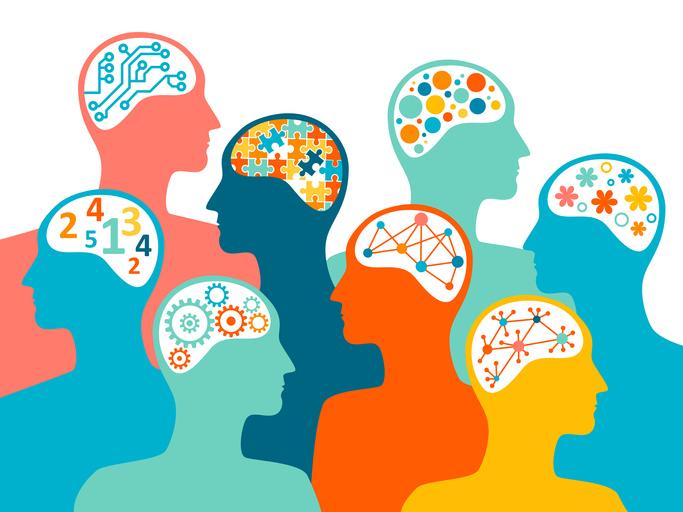The teaching laboratory is a daunting place for any new student. But bright lights, the whirr of machinery and large open spaces filled with other people can push autistic students towards overstimulation – to the point where they can’t go on.
However, through the use of reasonable adjustments and considerate academic actions, we can address these issues and allow neurodivergent students to thrive. Here, we’ll look at the main challenges they face and highlight appropriate solutions.
- Rethinking neurodiversity in higher education
- AI as an access tool for neurodiverse and international staff
- Supervising neurodiverse postgraduate researchers
As an autistic student, my senses are constantly heightened, experiencing the sights, sounds and smells much more than those of typical students. This leads to overstimulation, a phenomenon where the brain receives too much information from the senses and cannot process it effectively. This has a huge impact on my learning, as I lose concentration and can’t quickly complete tasks.
For example, if there is a constant beeping in the background, even if it is quiet, I cannot block it out. That sound becomes the only thing I can focus on. It repeats in my head like a broken record, and no matter how much I want to ignore it, I cannot. The same process occurs for bright lights and strong or unusual smells. Throughout it all, I try to continue to work, but sometimes it is physically impossible and I cannot concentrate on my work until the sensory stimulus stops.
For most people, their brain filters background stimuli out without their having to think about it. Autistic brains do not. For me, it’s manual: I must consciously focus on not reacting to the noise, not being distracted by someone walking past and not zoning in on a flickering light. It takes so much concentration just to be in the laboratory, let alone succeed in the task.
Another difficulty I have noticed since studying within the laboratory is my ability to process new information under pressure. Sometimes, last-minute changes occur, such as changes to the staff delivering sessions or delays in starting because of late arriving students. Sometimes, laboratory methods are changed from what was originally written in the protocols booklet to make classes run smoothly. This may seem trivial, but these changes make me feel overwhelmed and pressured, and often lead to me making mistakes, because I am trying to re-route my brain under stress. Even small changes can feel massive when I have mentally prepared to do a task step by step.
When I read a set of instructions, I follow word-for-word exactly what is written. Autistic students take information literally, but in many methods, the instructions can be unclear, vague or assume knowledge. This leads to confusion and heightened stress on an already overstimulated mind.
During laboratory sessions, all these factors put added mental strain on me and leave me mentally and physically exhausted. I love the practical classes, but the processing of all these additional factors alongside the act of learning something new and highly technical is draining.
How to provide support
With sensory overload in mind, one thing my university has provided is access to a separate laboratory space, linked to the main teaching space. This allows me to dim lights, as well as manage sounds and other sights.
Alongside this, my university’s technology-enhanced laboratories, capable of livestreaming practical demonstrations and content to alternative spaces within our laboratory building, enable me to receive the same academic experience as non-autistic students within the main teaching laboratory. Without this intervention by my first-year programme leader, Matthew Jones, I would have been unable to continue with my studies and would have been forced to withdraw from my degree, solely due to my autism and the sensory overload I face.
Academics need to provide advance warning of any changes to planned laboratory sessions, where possible, as even five minutes’ notice allows for the information to be processed more effectively. If the academic or support staff can clearly explain these changes in a calm, step-by-step way, so that the student has time to process it with confidence, that’s even better.
I’ve been provided with most of my methods well in advance of the laboratory sessions, via the virtual learning environment. This means I can process the information well ahead of the session and take things at my own pace. I can also identify elements which I’ll need support to interpret and prepare any questions I may have.
When writing methodologies for higher education laboratory classes, academics should consider writing their protocols as literally as possible, including as much information as possible. This allows everyone to have a strong level of understanding and facilitates equitable learning experiences.
What else can institutions do:
- Consider timetable structure. Avoid back-to-back practical laboratory sessions. Allow time for autistic learners to recover from one session and prepare for the next.
- Point out quiet, sensory spaces to autistic students when they start university, so they can easily find places to de-escalate if they need it.
- Provide training for staff on neurodiversity, so they have an understanding of what students may be experiencing.
- Consider neurodiverse learners when designing new laboratory teaching spaces.
I’ve faced challenges in enabling my laboratory class education, with points where I thought I might quit. But through the considerate and caring actions of my programme team and the university as a whole, I feel as though I have been given the opportunity to thrive within the laboratory, allowing me to achieve things I did not think possible at the start of my journey.
Matthew Jones is senior lecturer in physiology and Beth Crofts is an undergraduate student, both at the University of Salford.
If you would like advice and insight from academics and university staff delivered direct to your inbox each week, sign up for the Campus newsletter.




comment